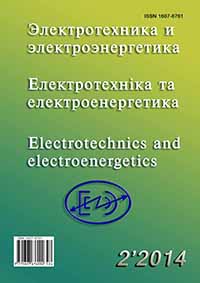REFINEMENT OF THE MODEL OF TWO-COMPONENT DOSING AUTOMATED CONTROL FOR THE PROCESS OF AERATED CONCRETE PREPARATION
DOI:
https://doi.org/10.15588/1607-6761-2014-2-9Keywords:
mathematical modeling, dosing of dry components, automated process control system, aerated concreteAbstract
A refined mathematical model of the automated control system with two-component dosing of dry components for the aerated concrete preparation process are worked out. Developing this model the features of the actuators (valves, drive screw feeder), dependencies of flow dynamics of weighed components from the meter hopper geometry, the feedback signal dependencies from the effort generated by the flow properties of the components and weight sensors are taken into account. These models allow us to have more accurate assess for the weight of the components necessary in the meter hopper and the exhaust velocity components from the supply tank. The developed model improves the computer model adequacy and the quality of the process automated controlReferences
Кулинич Э. М. Метод моделирования и визуализации многопараметрической системы управления технологическим процессом приготовления газобетона / Э. М. Кулинич, В. В. Зиновкин, С. Е. Шаповалов // Електротехніка та електроенергетика. – 2010. – № 2. – С. 6–61.
Кулинич Э. М. Методологические основы моделирования системы управления технологическим процессом производства газобетона / Э. М. Кулинич, C. Е. Шаповалов // Стратегія якості у промисловості і освіті : міжнар. конф., 4–11 червня 2010р. : тези докл. – Варна, Болгарія, 2010. – Т. 1(2). – С. 231–234.
Ткачев В. С. Оптимизация процесса весового дозирования сыпучих материалов / В. С. Ткачев, В. А. Ужеловский, В. В. Грубов // Вестник Приднепровской государственной академии строительства и архитектуры. – Днепропетровск: ПГАСА, 2009. – № 8. – С. 7–13.
Зенков Р. Л. Бункерные устройства / Р. Л. Зенков, Г. П. Гриневич, В. С. Исаев. – М.: Машиностроение, 1977. – 223 с.
Зенков Р. Л. Механика насыпных грузов / Р. Л. Зенков – М. : Машгиз, 1964. – 215 с.
Каталымов А. В. Дозирование сыпучих и вязких материалов: учебник / А. В. Каталымов, В.А. Любартович. – Л.: Химия, 1990. – 240 с.
Видинеев Ю. Д. Автоматическое непрерывное дозирование жидкостей / Ю. Д. Видинеев – М. : Энергия, 1967 – 109 с.
Осадчий В. В. Определение мгновенной производительности вибропитателя на основании сигнала с датчика веса в системе дискретного дозирования / В. В. Осадчий // Вісник КДПУ – Кременчук: КДПУ, – 2008. – Вип.4 (51) Част. 2. – C. 91–93.
Осадчий В. В. Уточнение взаимосвязей и параметров электромеханической системы дозирования вибрационного типа / В. В. Осадчий // Материалы IX международной научно-технической конференции «Електромеханічні системи, методи моделювання і оптимізації» КГПУ. 15–17 мая 2007 г. – Вип.4 (45), Част. 2. – C. 19–21.
Зиновкин В. В. Моделирование автоматизированного электропривода дозатора технологической линии приготовления газобетона / В. В. Зиновкин, Э. М. Кулинич // Електротехніка та електроенергетика – 2009. – № 2. – С. 49–53.
Зиновкин В. В. Моделирование автоматизированного управления двухкомпонентным дозированием многопараметрического процесса приготовления газобетона / В. В. Зиновкин, Э. М. Кулинич // Системні технології. Регіональний міжвузівський збірник наукових праць. – Дніпропетровськ, 2009. – Випуск 6 (65) – С. 53–64.
Downloads
How to Cite
Issue
Section
License
Copyright (c) 2017 E. M. Kulynych

This work is licensed under a Creative Commons Attribution 4.0 International License.
Creative Commons Licensing Notifications in the Copyright Notices
Authors who publish with this journal agree to the following terms:
Authors retain copyright and grant the journal right of first publication with the work simultaneously licensed under aCreative Commons Attribution License that allows others to share the work with an acknowledgement of the work's authorship and initial publication in this journal.
Authors are able to enter into separate, additional contractual arrangements for the non-exclusive distribution of the journal's published version of the work (e.g., post it to an institutional repository or publish it in a book), with an acknowledgement of its initial publication in this journal.
Authors are permitted and encouraged to post their work online (e.g., in institutional repositories or on their website) prior to and during the submission process, as it can lead to productive exchanges, as well as earlier and greater citation of published work.

